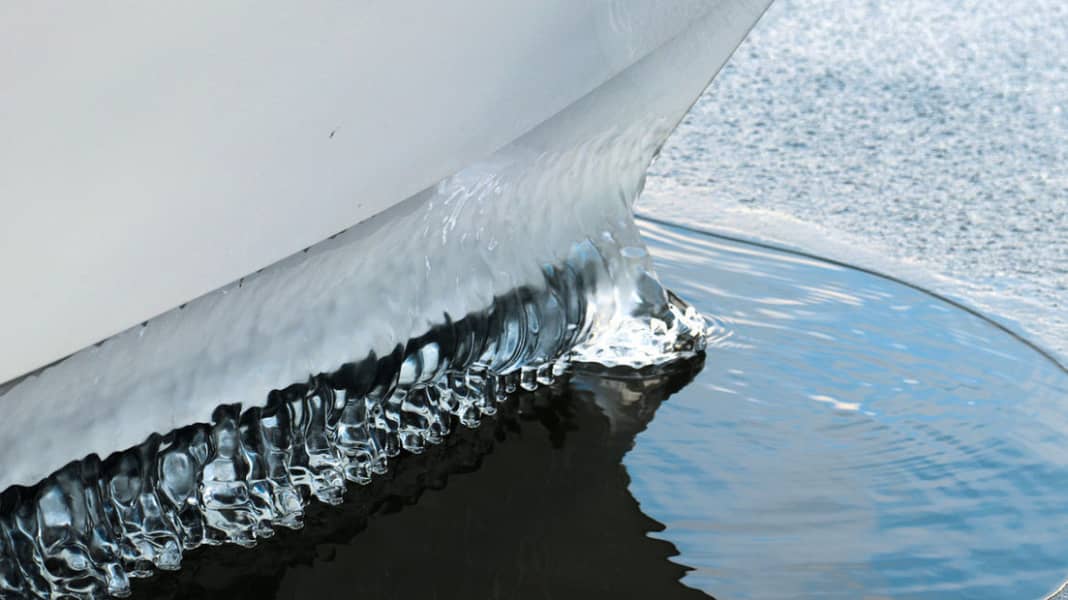
There are basically two tried and tested techniques for keeping your berth free of ice. The simplest option is to use one or two submersible pumps. If necessary, they pump the warmer deep water under the hull of the boat to keep it free of ice. Even with air temperatures in the double-digit minus range, the water in the deeper layers never cools below zero degrees. Temperatures of between two and four degrees Celsius are common in water depths of two to three metres.
If this "warm" water is now pumped to the surface, the higher temperature and the movement of the water surface ensure that the hull and its fittings are prevented from freezing.
Here we show you how to build such a system yourself and what you need for it.
Need more information? Part I of the winter journal "How to keep your berth ice-free" can be found with further explanations in BOOTE issue 11/2021 from 20 October 2021 at newsagents or online in theDelius Klasing Shop.
The function
Our "ice-free system" operates in two stages and only switches the pumps on when there is an actual demand. This behaviour is implemented firstly by a temperature switch and secondly by a timer connected in series.
In practice, a floating thermal sensor monitors the water temperature and forwards this value to the temperature switch. If the temperature on the water surface drops below zero degrees, the timer is activated, which in turn runs the pumps at the previously selected rhythm. Depending on the timer used, it can be programmed in 10 or 15-minute increments.
In practice, 15 minutes of pumping time per hour is sufficient, with 2 x 15 minutes per hour being sufficient on particularly frosty days.
The minimum equipment required is a temperature switch with external sensor, a timer for outdoor use and at least one submersible pump.
Pumps
There are several things to consider when selecting a pump: Firstly, the pump must be "suitable for dirty water". Contamination in the harbour water or unintentional ground contact can otherwise damage the blades of the submersible pumps and lead to failure. Secondly, the pump must have a sufficient immersion depth. Depending on the type of boat, five metres immersion depth should always be sufficient. The pumping capacity is directly related to the electrical power. To keep the electricity costs within reasonable limits, we opted for a 400 watt pump with a flow rate of 140 litres per minute. If necessary, around two tonnes of "warm water" are therefore pumped under the hull of the boat per switching cycle (15 min); experience shows: That's more than enough. Depending on the length of the boat, several pumps should be used. For small and medium-sized boats up to around eight metres in length, one pump is sufficient; for boats longer than this, two or even three pumps should be used, which should then be distributed along the hull according to the length of the boat.
More on the topic:
